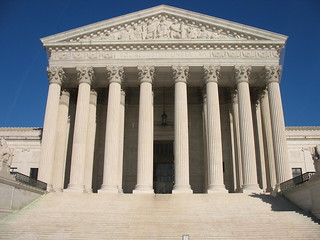 Last week United States Supreme Court declared it cruel and unusual punishment to sentence a juvenile offender to life without parole. As with all of their decisions, it was met by some with complete outrage and by some as a move long-needed.
Last week United States Supreme Court declared it cruel and unusual punishment to sentence a juvenile offender to life without parole. As with all of their decisions, it was met by some with complete outrage and by some as a move long-needed.
This one is based on a growing body of research, one that has influenced court decisions since around 2005. Neurophysical examination of children and youths has shown that there are very direct and physical reasons that the prior approach to juvenile justice does not work.
Ethan Bronner of The New York Times provides a bit of historical background on these prior court cases:
“What we are seeing is a very stark and important rethinking of how we treat juvenile criminal offenders,” said Marsha Levick, who co-founded the nonprofit Juvenile Law Center in Philadelphia in 1975. “For years we were trying to convince the courts that kids have constitutional rights just like adults. Now we realize that to ensure that kids are protected, we have to recognize that they are actually different from adults.”
That sense of difference has fueled the Supreme Court decisions of the past seven years — first a ruling that barred the death penalty for juveniles in 2005; one that banned life in prison for juveniles convicted of crimes other than homicide in 2010; and now Monday’s ruling that rendered invalid state laws requiring youths convicted of homicide as well to die in prison. That decision will lead to resentencing hearings for about 2,000 convicts — some of them now well into middle age — in more than two dozen states.
All of the recent rulings placed emphasis on research showing that the less-formed brains of the young make them less morally culpable and more capable of change later. So condemning them to die in prison, advocates assert, ignores key advances in scientific understanding.
In addition to the evidence provided by the physical sciences there is also the problem of cookie-cutter justice, a “one size fits all” approach that removes judicial discretion from the picture.
Conservative writer Elizabeth Hovd on Oregon Live casts things in terms of the rights that we as a nation choose to bestow and which to deny. It’s a very interesting exercise when you consider the ages involved.
Justice is better served by weighing individual considerations than by following mandatory sentencing laws that offer no opportunity to rehabilitate people or allow them to become contributing members of society some day. If we are comfortable claiming people aren’t old enough to fully consider who to vote for before age 18 or be responsible with a beer until 21, banning mandatory life-without-parole sentencing for juveniles makes sense. Parole can and should still be denied if a criminal seems unchanged or is considered a continued threat to society.
Hovd also invokes Christian charity along with a reminder that if you do actually read the decision you’ll discover that this is not an automatic out for everyone, merely the rectification of a poor approach – one that dispenses with actual justice far too often.
It is far more important that we do what is right by victims and offenders than that we copy other countries. I would remind fellow conservatives who are also Christians that ours is a god of second chances — a god of the mulligan. Isn’t it our job to show mercy to penitent men, just as God has shown mercy? Besides, punishment and revenge have never brought back a loved one.
This ruling doesn’t offer a get-out-of-jail-free card. It does stop the legal system from treating children like adults. Children aren’t typically ready to drive at 12 or vote at 14. And children don’t magically turn into adults when they commit a horrible act.
That last point is the one that most people miss: these are children. This is one of the reasons that we produced Born, Not Raised. People need to be exposed to the narratives of the kids lost in our system. It is these narratives that humanize them.
A problem becomes much harder to ignore once you put a human face on it.











